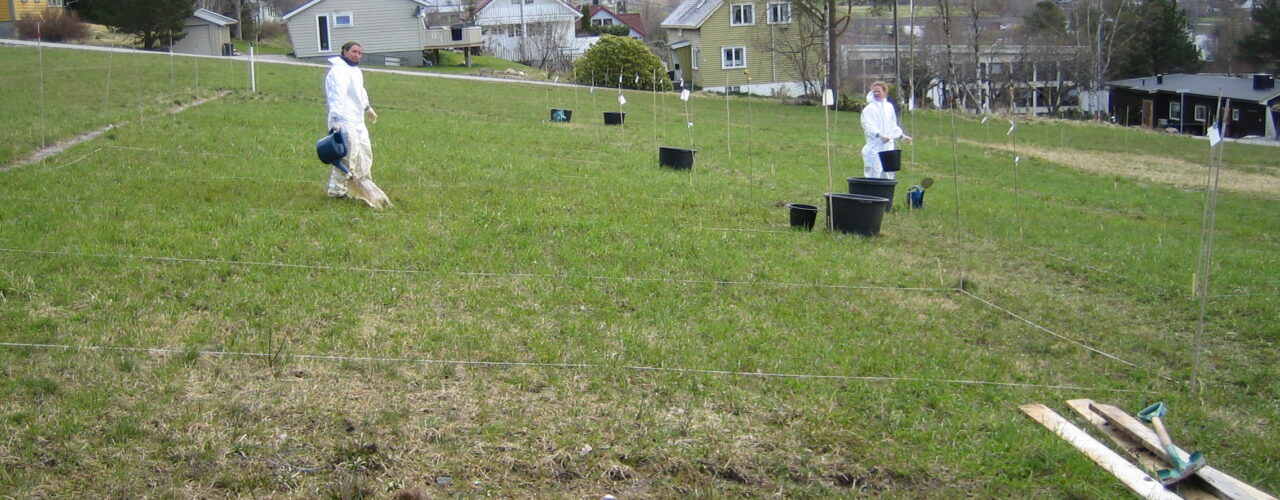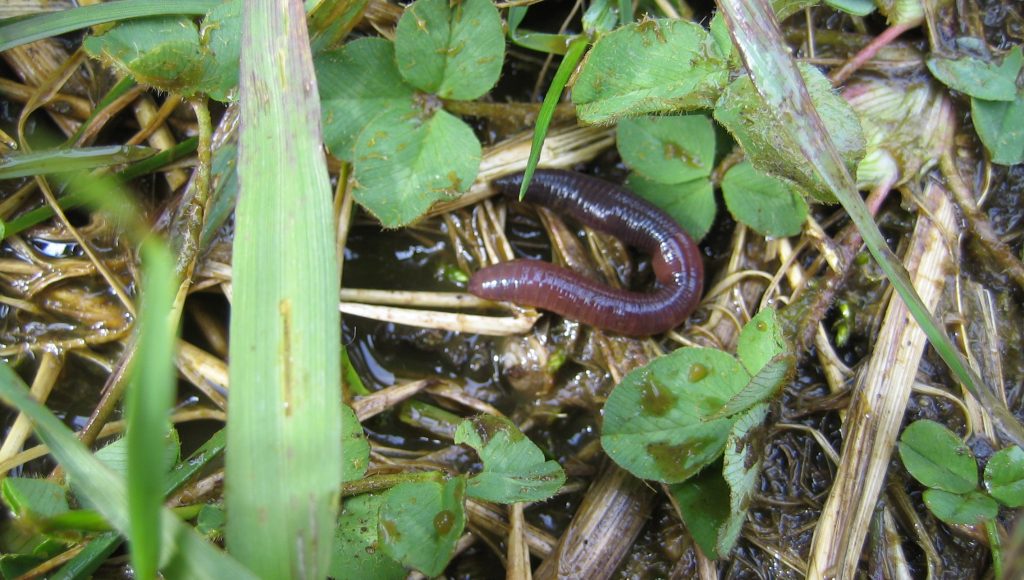
Effects of Anaerobically Digested Manure on Soil Fertility. The Field Experiment “SoilEffects”
Since 2011, grass-clover yields and soil characteristics have been studied at Tingvoll farm, with application of digested and non-digested slurry from organic dairy cows. Results are available below.
The Tingvoll farm’s biogas plant has been in operation since 2012. For organic farmers it is important to know if digested slurry could be harmful or less beneficial to soil life than normally treated livestock manure. Maintaining a fertile soil is the basis of organic agriculture, and an active and diverse soil fauna is thus needed to release plant-available nutrients. Producing biogas can contribute to a self-sufficiency in energy on farm level and reduce methane emissions from storage of slurry. On the other hand, the organic carbon in the manure that is converted to biogas could perhaps have served as food for the soil fauna instead? What should organic farmers think about anaerobic digestion of livestock slurry? We are trying to provide some answers in a long-term field experiment called «SoilEffects».
The field trial mimics the crop rotation used by the farmer managing most area on Tingvoll farm to feed the herd of organic dairy cows, with two levels of application of both digested and undigested slurry. The level of corresponds to organic farming with low input of feed produced outside the farm. The high level corresponds to the amount of manure which is commonly available in conventional farming. The same crop is grown on all plots each year. About each 5th year the ley is ploughed and re-established with oats or barley as a cover crop. In the re-establishment year, no manure is applied, and we measure the effect of previous years’ fertilisation. Low and high amounts of normal and digested slurry from the dairy cows on the farm are compared with plots not receiving any fertiliser since 2010.
In the beginning we had two cropping systems, one with perennial ley and one with arable crops. With 4 replicates, we had 20 experimental plots in each system. Due to weed problems in the arable system we changed all plots to perennial ley in 2015. With 8 replicates of each manure treatment we could study some additional effects to the anaerobic digestion of the slurry.
In 2016, the experiment was used to study if addition of fine-ground limestone to the manure prior to application could increase the N uptake/decrease N loss during application, as indicated by increased yield of ley. Omya Hustadmarmor AS cooperated in this study. For the second cut, a significant yield increase of 6% (DM) was achieved. For the 1st cut no significant effect was found, but this may be due to that we used manure being stored since 2014 for the first application of manure. Later, fresh manure was used.
In 2018, the experiment was used to study the effect of applying struvite in spring. Struvite is a mineral which may be precipitated in wastewater treatment plants. We received struvite from the Hias IKS treatment plant close to Hamar, Norway. A significant yield increase was achieved in plots receiving no manure, or low amounts of manure. A strong increase in AL-extractable phosphorous in soil was also found. The EU considers allowing struvite for use in certified organic farming, but this decision is dependent on a general acceptance of struvite as a fertiliser in EU.
When the experiment was established in 2011 we acquired funding from the Research Council of Norway (BIONAER programme) and Sparebanken Møre. Later, we received funding from several funding bodies such as funds allocated by the national agricultural agreement, Ministry of Agriculture and Food, Norwegian Agriculture Agency, Møre og Romsdal County Council and the Regional Research Fund for Mid-Norway.
The field experiment is an arena for improving our knowledge, while at the same time enabling us to obtain long-term registrations of yields and soil characteristics under different manuring regimes.



